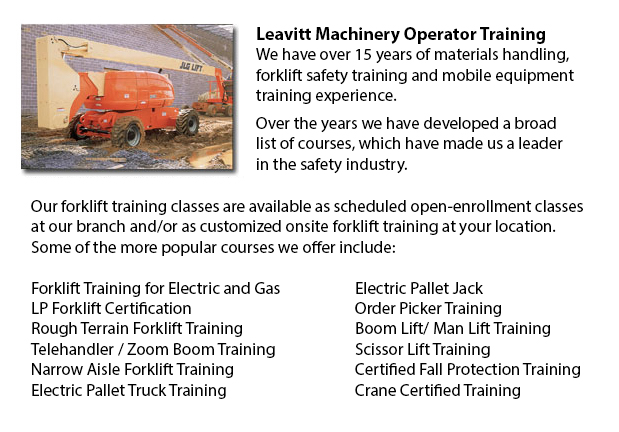
Coquitlam Boom Lift Operator Training - The cherry picker work platform is a type of work platform, which would typically consist of a platform or bucket at the hydraulic lifting system's end. The machine is also called a man lift, boom lift, basket crane or hydraladder.
The bucket or platform is usually mounted on the back of a large motor vehicle like a truck, which is occasionally known as a bucket truck. A self-moving platform, stand-alone trailer or flat back pickup van could also be made use of. The worker stands and begins working within the bucket. The person inside the bucket usually consists of an upper set of controls enabling manipulation of the bucket's position. The reach of the bucket could be lengthened on several models by telescoping to adjust the lifting arm. Automatic safety controls prevent tipping. Articulated boom lifts are recommended for working in tight areas or when it is necessary to clear obstacles.
Cherry pickers, as the name suggests, were first constructed for picking fruit at high levels in trees. These machines are normally utilized in various businesses such as construction, mining and exterior painting. Occasionally they are utilized for cleaning windows on high rise. The machines are used to service cable television, electrical equipment and telephone on utility poles. At times, firefighters use cherry pickers, referred to as snorkels, when ladders are insufficient. At Christmas season, civic workers could be seen hanging banners and lights inside cherry pickers.
Boom Lift Operator Safety Training
Recommended training standards for safety awareness are set by local regulations. Program consists of safe operation methods through a combination of classroom and hands-on components.
Sessions cover the following topics: current regulation and applicable concerns; general equipment safety matter; fall protection; features of boom lifts, scissor-lifts and various stationary work platforms.
The lift operator's responsibilities are covered, like for example the following topics: workplace inspections; function test procedures; knowing and avoiding dangers; equipment manufacturer's guidelines and pre-operation inspections procedures.
-
Coquitlam Crane Certification
Coquitlam Crane Certification - The Crane Certification training program consists of subject matter recommended by industry concerning the safe and efficient operation of cranes. Trainees will be taught the following: how to identify cranes and their... More -
Coquitlam Crane Training Courses
Coquitlam Crane Training Courses - A crane is a kind of equipment designed to move, lift and lower heavy stuff. A crane is usually equipped with a hoist, sheaves, and chains or wire ropes. Cranes are used in the manufacturing, construction and transp... More -
Coquitlam Boom Lift Safety Training
Coquitlam Boom Lift Safey Training - Boom lifts are a kind of elevated work platform or aerial lifting device which are usually used in industry, warehousing and construction. Boom lifts can be utilized in virtually any setting due to their versatili... More -
Coquitlam Boom Lift Training
Coquitlam Boom Lift Training - Aerial platforms or also known as elevated work platforms are devices which allow workers to carry out duties and tasks at elevated heights that would not be otherwise reachable. There are different aerial lifts availab... More -
Coquitlam Forklift Certification Schools
Coquitlam Forklift Certification Schools - Forklift Certification is mandatory within North America. Hence, forklift training programs are important both for businesses and for people looking for jobs in industries as operators of forklifts. Forklift... More -
Coquitlam Wheel Loader Training
Coquitlam Wheel Loader Training - Normally, the different types of heavy equipment training are divided into 2 categories of equipment: those that have rubber tires and tracked vehicles. Tracked vehicles include items like for instance bulldozers, ex... More -
Coquitlam Heavy Equipment Training Schools
Coquitlam Heavy Equipment Training Schools - There are a lot of heavy equipment training schools to choose from. If you would like to get to the best, it is important to examine several factors of the school to be able to determine the level of educa... More -
Coquitlam Telehandler Training Courses
Coquitlam Telehandler Training Courses - Employers are responsible for making sure that their supervisory and operating personnel are trained to work proficiently making use of telehandler equipment. The skill level of workers should be assessed. If... More

Forklift Certification Coquitlam
TOLL FREE: 1-888-254-6157
Coquitlam, British Columbia
forkliftcertificationcoquitlam.com
Email Us
About Us


